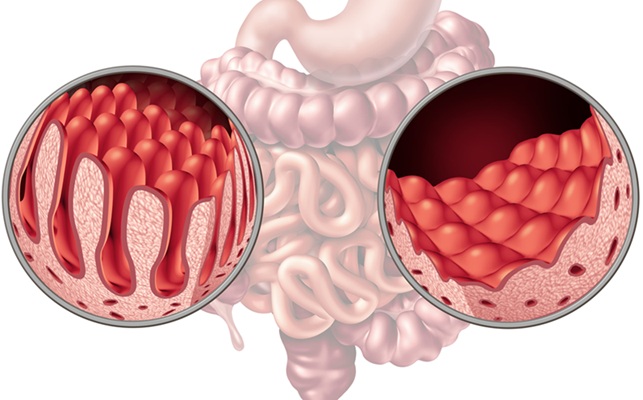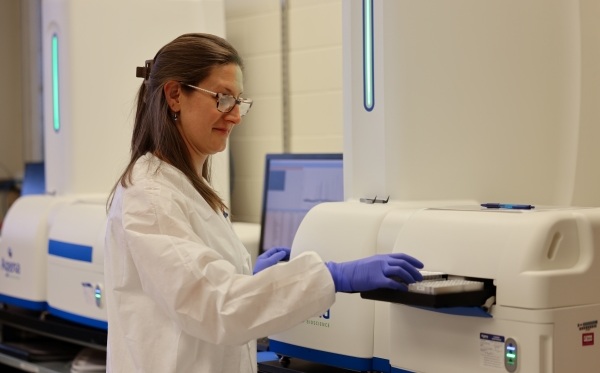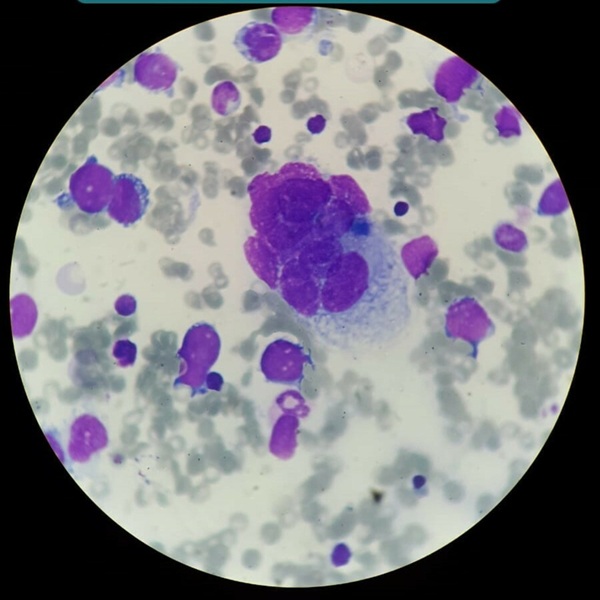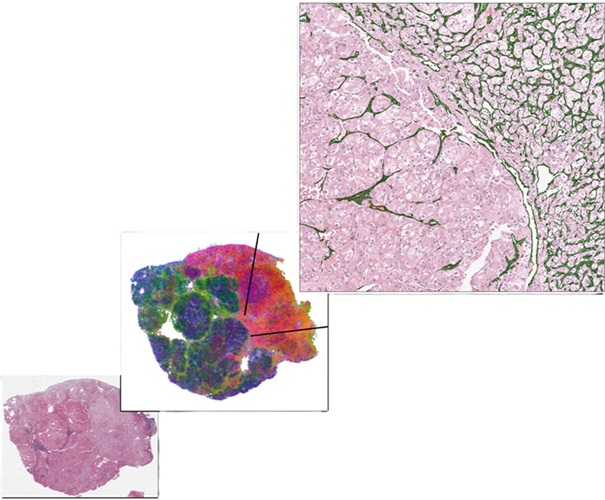Infant HIV Near Point-of-Care Test Field Evaluated
|
By LabMedica International staff writers Posted on 30 Jan 2019 |
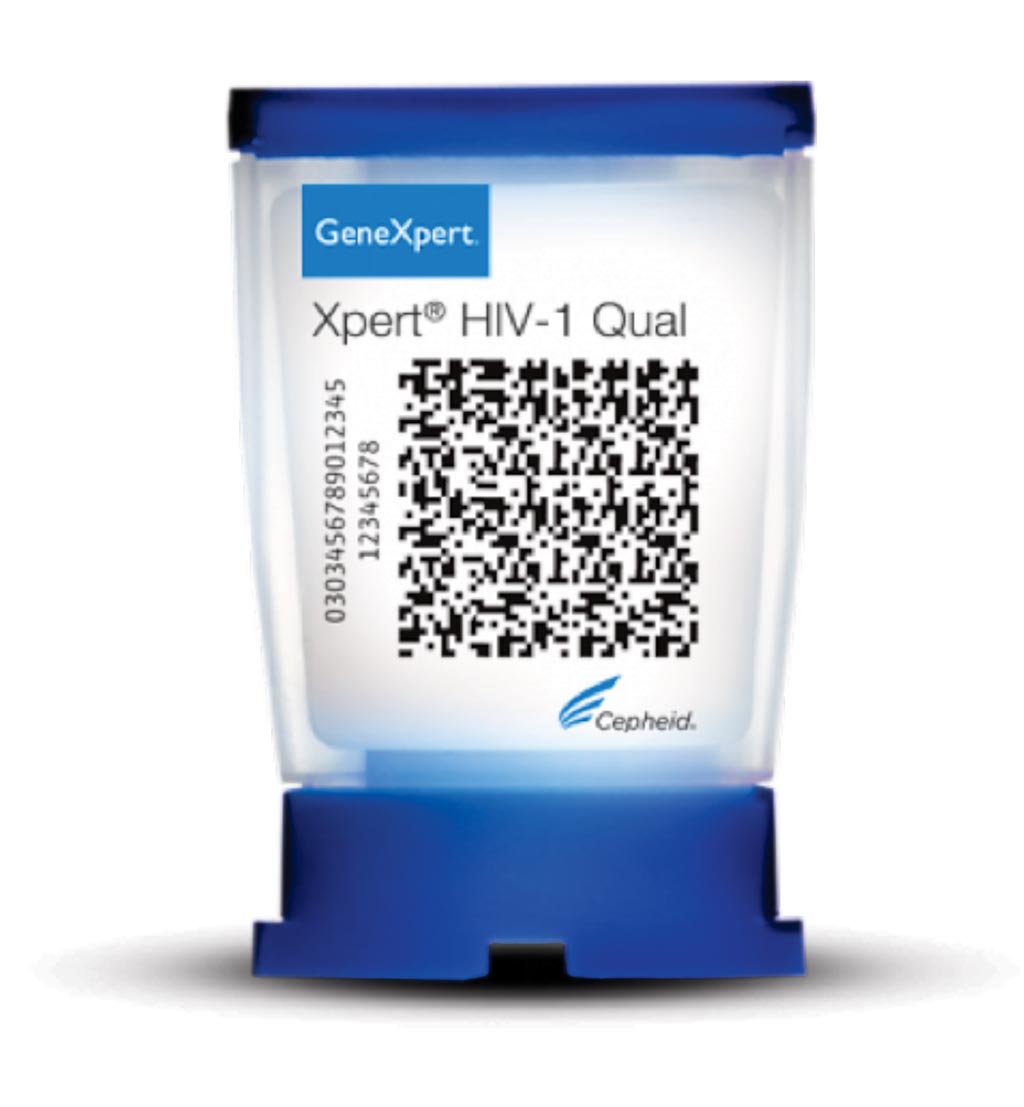
Image: The GeneXpert HIV-1 Qual is a highly sensitive HIV qualitative test is needed for detecting HIV infection in pediatric patients 18 months of age or younger (Photo courtesy of Cepheid).
Perinatal human immunodeficiency virus (HIV) infection contributes to an increase in morbidity and mortality among children in their first years of life, and lack of antiretroviral treatment (ART) and late ART initiation has seen more than half of the infants infected with HIV die before their second birthday.
The first step in the provision of early infant diagnosis (EID) services and linkage to care among HIV exposed infants is early identification; however this still remains a challenge in sub-Saharan Africa (SSA). Access to HIV diagnosis for HIV-exposed infants and children is a challenge in SSA because of the processes involved in HIV detection that require use of nucleic acid amplification tests conducted by trained personnel in centralized laboratories usually based in urban centers.
Scientists at the Kenya Medical Research Institute (Kisumu, Kenya) and their colleagues screened and evaluated 3,814 mother-infant pairs who presented to clinics and hospitals in a town in Kenya in 2016. In the six-month timespan of the study, there were 921 infants enrolled who were known to be exposed to HIV based on the mother's HIV status. Dried blood samples (DBS) samples were collected from HIV exposed children less than18 months of age enrolled in a cross-sectional study.
The team performed Rapid HIV testing using serial tests with Determine Rapid HIV-1/2 Antibody test followed if positive by Unigold Rapid HIV test kits. The team performed a field evaluation of GeneXpert HIV-1 Qual. The GeneXpert HIV-1 Qual Assay was performed on six different GeneXpert instruments by 10 trained laboratory technologists. The test was compared with the gold standard for EID PCR, COBAS AmpliPrep/COBAS TaqMan HIV-1 Qualitative Test, v2.0 assay (CAP/CTM HIV-1) qualitative PCR.
The scientists performed a total of 969 POC tests on 921 (24.6%) children who were HIV exposed. Approximately 15% of the children were tested as newborns and 49% of them tested at routine EID visit of six weeks. Out of the 921 exposed infants identified throughout the study, 30 were found HIV positive through both the Roche CAP/CTM and near point of care (GeneXpert), leading to a mother-to-child transmission (MTCT) rate of 3.3%. A total of 969 results were correctly assayed, with a final sensitivity and specificity of 94.1% and 99.8%, respectively, with two false negative PCR found. The POC gave an error rate of 0.7%, (7/969 samples) and all were resolved after a repeat test.
The authors concluded that their study demonstrated that the GeneXpert POC EID assay has a high sensitivity and specificity and performs well in a field setting with high coverage of ART prophylaxis among mothers and children. The sensitivity and specificity of 94% and 99% respectively, does reflect the true performance of the device even though they had nine discordant results with Roche, seven were what Roche considered as “reference test” errors. The study was originally published on December 27, 2018, in the journal Public Library of Science ONE.
Related Links:
Kenya Medical Research Institute
The first step in the provision of early infant diagnosis (EID) services and linkage to care among HIV exposed infants is early identification; however this still remains a challenge in sub-Saharan Africa (SSA). Access to HIV diagnosis for HIV-exposed infants and children is a challenge in SSA because of the processes involved in HIV detection that require use of nucleic acid amplification tests conducted by trained personnel in centralized laboratories usually based in urban centers.
Scientists at the Kenya Medical Research Institute (Kisumu, Kenya) and their colleagues screened and evaluated 3,814 mother-infant pairs who presented to clinics and hospitals in a town in Kenya in 2016. In the six-month timespan of the study, there were 921 infants enrolled who were known to be exposed to HIV based on the mother's HIV status. Dried blood samples (DBS) samples were collected from HIV exposed children less than18 months of age enrolled in a cross-sectional study.
The team performed Rapid HIV testing using serial tests with Determine Rapid HIV-1/2 Antibody test followed if positive by Unigold Rapid HIV test kits. The team performed a field evaluation of GeneXpert HIV-1 Qual. The GeneXpert HIV-1 Qual Assay was performed on six different GeneXpert instruments by 10 trained laboratory technologists. The test was compared with the gold standard for EID PCR, COBAS AmpliPrep/COBAS TaqMan HIV-1 Qualitative Test, v2.0 assay (CAP/CTM HIV-1) qualitative PCR.
The scientists performed a total of 969 POC tests on 921 (24.6%) children who were HIV exposed. Approximately 15% of the children were tested as newborns and 49% of them tested at routine EID visit of six weeks. Out of the 921 exposed infants identified throughout the study, 30 were found HIV positive through both the Roche CAP/CTM and near point of care (GeneXpert), leading to a mother-to-child transmission (MTCT) rate of 3.3%. A total of 969 results were correctly assayed, with a final sensitivity and specificity of 94.1% and 99.8%, respectively, with two false negative PCR found. The POC gave an error rate of 0.7%, (7/969 samples) and all were resolved after a repeat test.
The authors concluded that their study demonstrated that the GeneXpert POC EID assay has a high sensitivity and specificity and performs well in a field setting with high coverage of ART prophylaxis among mothers and children. The sensitivity and specificity of 94% and 99% respectively, does reflect the true performance of the device even though they had nine discordant results with Roche, seven were what Roche considered as “reference test” errors. The study was originally published on December 27, 2018, in the journal Public Library of Science ONE.
Related Links:
Kenya Medical Research Institute
Latest Technology News
- Advanced Predictive Algorithms Identify Patients Having Undiagnosed Cancer
- Light Signature Algorithm to Enable Faster and More Precise Medical Diagnoses
- Disposable Microchip Technology Could Selectively Detect HIV in Whole Blood Samples
- Pain-On-A-Chip Microfluidic Device Determines Types of Chronic Pain from Blood Samples
- Innovative, Label-Free Ratiometric Fluorosensor Enables More Sensitive Viral RNA Detection
- Smartphones Could Diagnose Diseases Using Infrared Scans
- Novel Sensor Technology to Enable Early Diagnoses of Metabolic and Cardiovascular Disorders
- 3D Printing Breakthrough Enables Large Scale Development of Tiny Microfluidic Devices
- POC Paper-Based Sensor Platform to Transform Cardiac Diagnostics
- Study Explores Impact of POC Testing on Future of Diagnostics
- Low-Cost, Fast Response Sensor Enables Early and Accurate Detection of Lung Cancer
- Nanotechnology For Cervical Cancer Diagnosis Could Replace Invasive Pap Smears
- Lab-On-Chip Platform to Expedite Cancer Diagnoses
- Biosensing Platform Simultaneously Detects Vitamin C and SARS-CoV-2
- New Lens Method Analyzes Tears for Early Disease Detection
- FET-Based Sensors Pave Way for Portable Diagnostic Devices Capable of Detecting Multiple Diseases
Channels
Clinical Chemistry
view channel
AI-Powered Blood Test Accurately Detects Ovarian Cancer
Ovarian cancer ranks as the fifth leading cause of cancer-related deaths in women, largely due to late-stage diagnoses. Although over 90% of women exhibit symptoms in Stage I, only 20% are diagnosed in... Read more
Automated Decentralized cfDNA NGS Assay Identifies Alterations in Advanced Solid Tumors
Current circulating cell-free DNA (cfDNA) assays are typically centralized, requiring specialized handling and transportation of samples. Introducing a flexible, decentralized sequencing system at the... Read more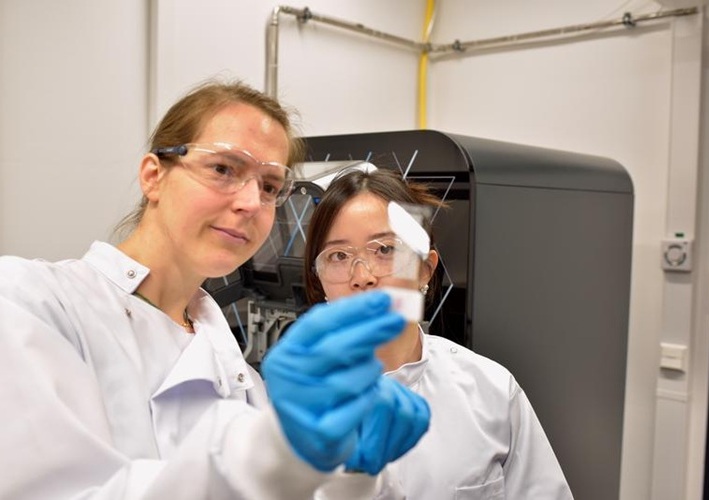
Mass Spectrometry Detects Bacteria Without Time-Consuming Isolation and Multiplication
Speed and accuracy are essential when diagnosing diseases. Traditionally, diagnosing bacterial infections involves the labor-intensive process of isolating pathogens and cultivating bacterial cultures,... Read more
First Comprehensive Syphilis Test to Definitively Diagnose Active Infection In 10 Minutes
In the United States, syphilis cases have surged by nearly 80% from 2018 to 2023, with 209,253 cases recorded in the most recent year of data. Syphilis, which can be transmitted sexually or from mother... Read moreMolecular Diagnostics
view channel
POC Oral Swab Test to Increase Chances of Pregnancy in IVF
Approximately 15% of couples of reproductive age experience involuntary childlessness. A significant reason for this is the growing trend of delaying family planning, a global shift that is expected to... Read more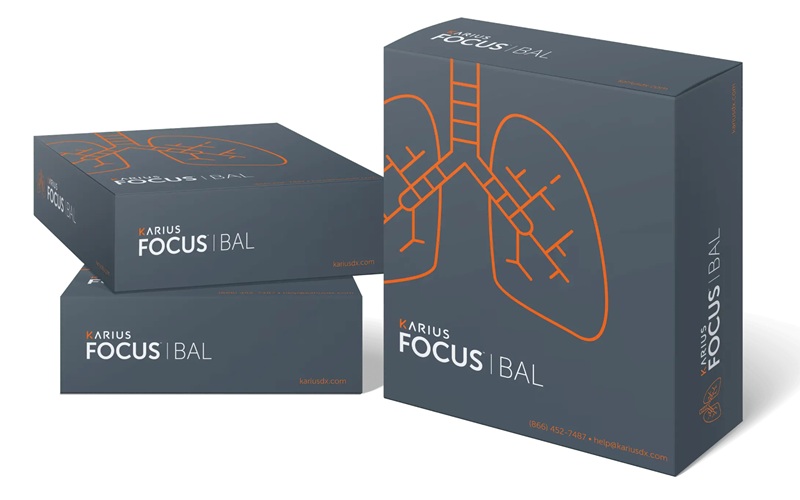
Microbial Cell-Free DNA Test Accurately Identifies Pathogens Causing Pneumonia and Other Lung Infections
Bronchoalveolar lavage (BAL) is a commonly used procedure for diagnosing lung infections, especially in immunocompromised patients. However, standard tests often fail to pinpoint the exact pathogen, leading... Read moreHematology
view channel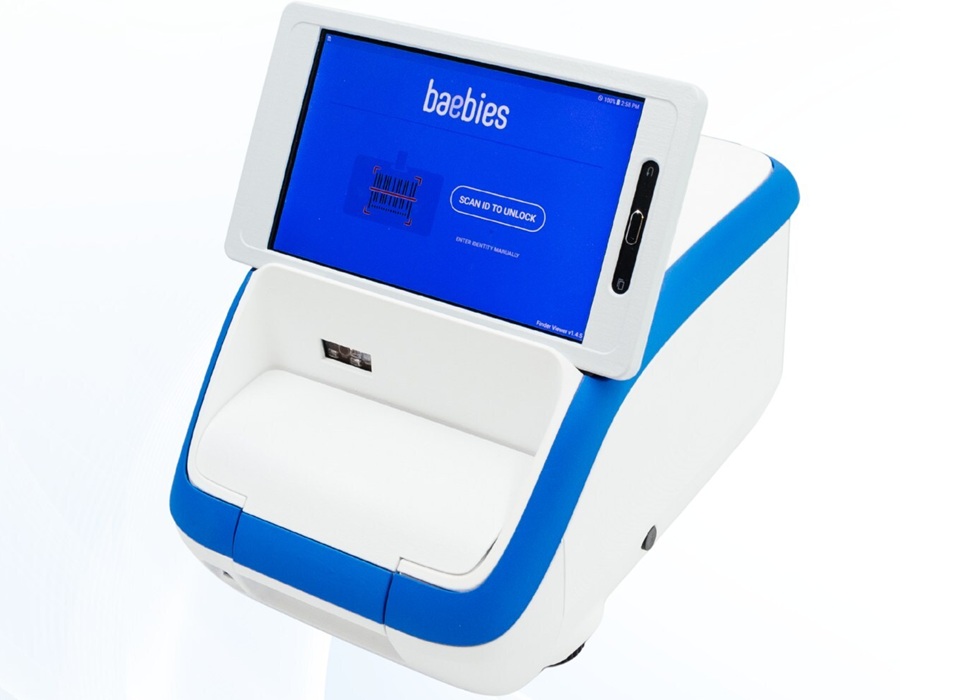
First Point-of-Care Heparin Monitoring Test Provides Results in Under 15 Minutes
Heparin dosing requires careful management to avoid both bleeding and clotting complications. In high-risk situations like extracorporeal membrane oxygenation (ECMO), mortality rates can reach about 50%,... Read more
New Scoring System Predicts Risk of Developing Cancer from Common Blood Disorder
Clonal cytopenia of undetermined significance (CCUS) is a blood disorder commonly found in older adults, characterized by mutations in blood cells and a low blood count, but without any obvious cause or... Read moreImmunology
view channel
Stem Cell Test Predicts Treatment Outcome for Patients with Platinum-Resistant Ovarian Cancer
Epithelial ovarian cancer frequently responds to chemotherapy initially, but eventually, the tumor develops resistance to the therapy, leading to regrowth. This resistance is partially due to the activation... Read more
Machine Learning-Enabled Blood Test Predicts Immunotherapy Response in Lymphoma Patients
Chimeric antigen receptor (CAR) T-cell therapy has emerged as one of the most promising recent developments in the treatment of blood cancers. However, over half of non-Hodgkin lymphoma (NHL) patients... Read morePathology
view channel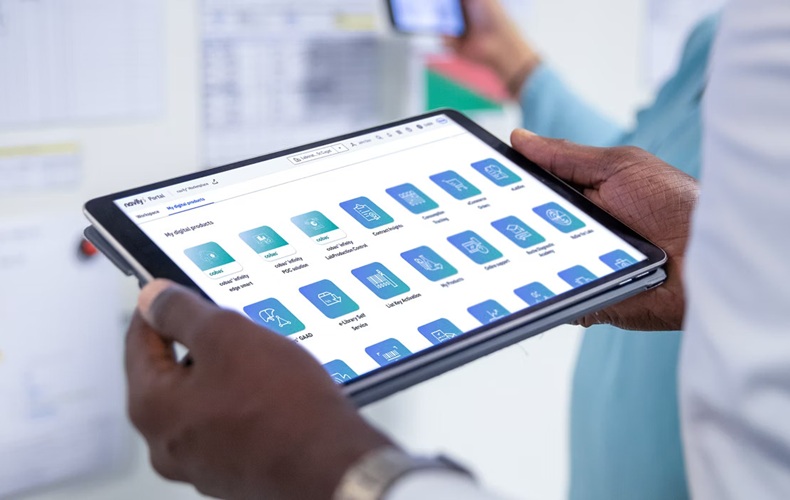
Groundbreaking Chest Pain Triage Algorithm to Transform Cardiac Care
Cardiovascular disease is responsible for a third of all deaths worldwide, and chest pain is the second most common reason for emergency department (ED) visits. With EDs often being some of the busiest... Read more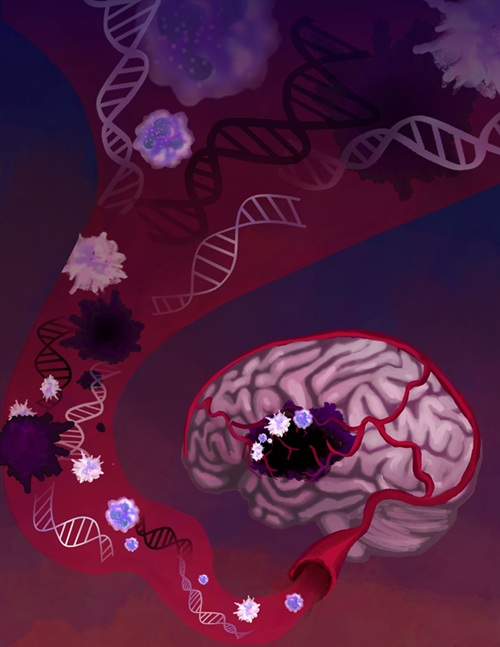
AI-Based Liquid Biopsy Approach to Revolutionize Brain Cancer Detection
Detecting brain cancers remains extremely challenging, with many patients only receiving a diagnosis at later stages after symptoms like headaches, seizures, or cognitive issues appear. Late-stage diagnoses... Read moreTechnology
view channel
Advanced Predictive Algorithms Identify Patients Having Undiagnosed Cancer
Two newly developed advanced predictive algorithms leverage a person’s health conditions and basic blood test results to accurately predict the likelihood of having an undiagnosed cancer, including ch... Read more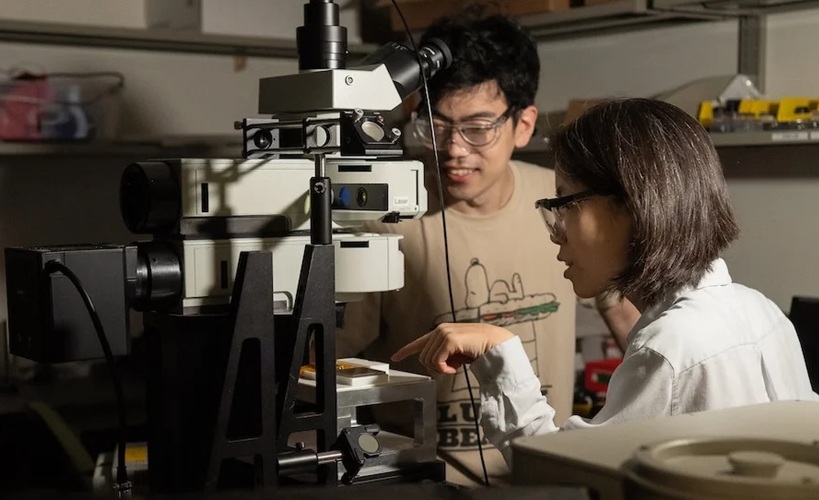
Light Signature Algorithm to Enable Faster and More Precise Medical Diagnoses
Every material or molecule interacts with light in a unique way, creating a distinct pattern, much like a fingerprint. Optical spectroscopy, which involves shining a laser on a material and observing how... Read more
Disposable Microchip Technology Could Selectively Detect HIV in Whole Blood Samples
As of the end of 2023, approximately 40 million people globally were living with HIV, and around 630,000 individuals died from AIDS-related illnesses that same year. Despite a substantial decline in deaths... Read more
Pain-On-A-Chip Microfluidic Device Determines Types of Chronic Pain from Blood Samples
Chronic pain is a widespread condition that remains difficult to manage, and existing clinical methods for its treatment rely largely on self-reporting, which can be subjective and especially problematic... Read moreIndustry
view channel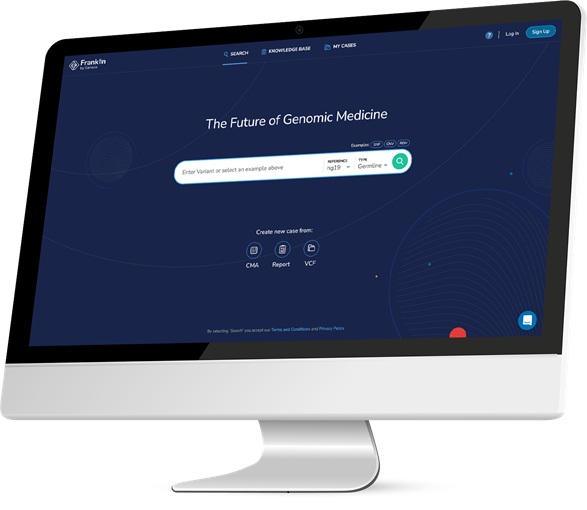
Qiagen Acquires NGS Analysis Software Company Genoox
QIAGEN (Venlo, the Netherlands) has signed a definitive agreement to acquire Genoox (Tel Aviv, Israel), a provider of artificial intelligence (AI)-powered software that enables clinical labs to scale and... Read more
Cepheid and Oxford Nanopore Technologies Partner on Advancing Automated Sequencing-Based Solutions
Cepheid (Sunnyvale, CA, USA), a leading molecular diagnostics company, and Oxford Nanopore Technologies (Oxford, UK), the company behind a new generation of sequencing-based molecular analysis technologies,... Read more
Grifols and Tecan’s IBL Collaborate on Advanced Biomarker Panels
Grifols (Barcelona, Spain), one of the world’s leading producers of plasma-derived medicines and innovative diagnostic solutions, is expanding its offer in clinical diagnostics through a strategic partnership... Read more




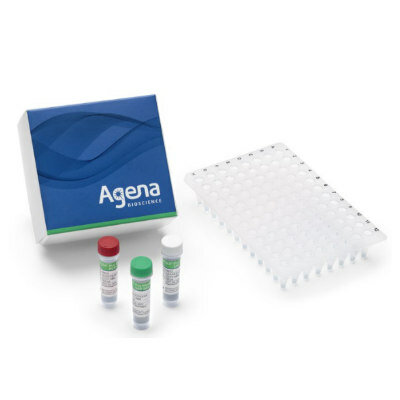


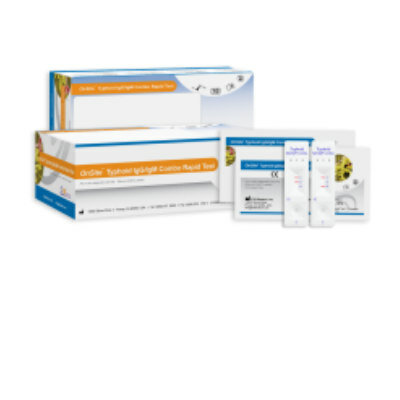

 Assay.jpg)

